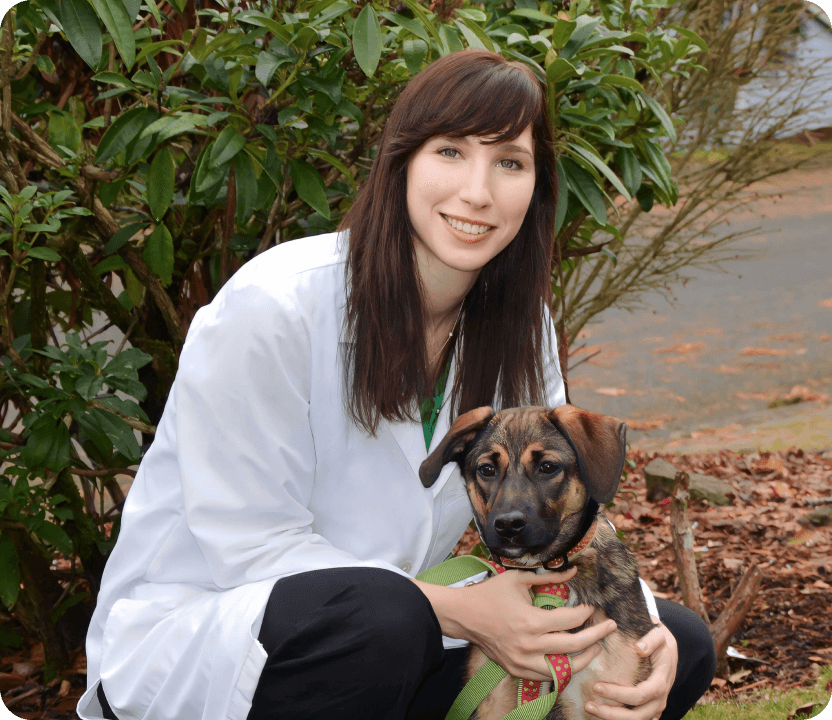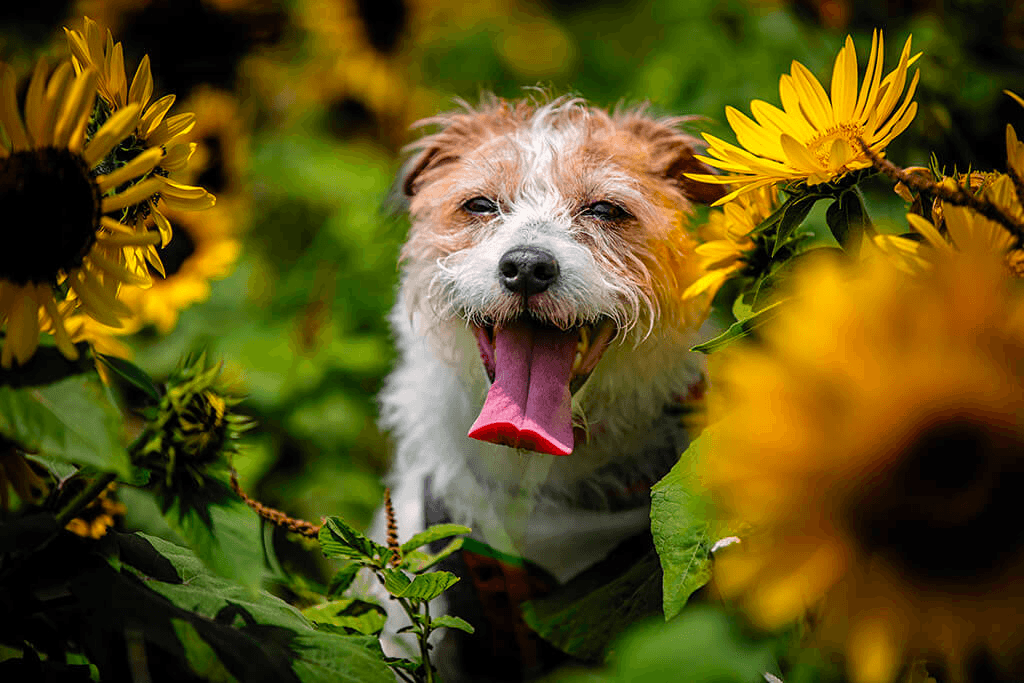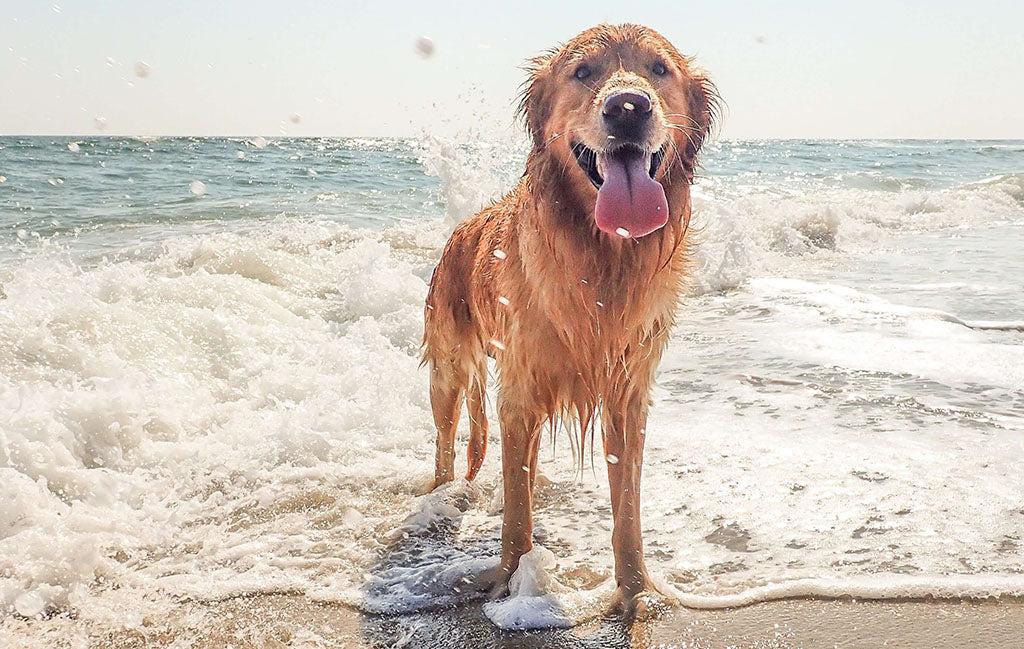Learn how to care for your dog’s chipped tooth, from first aid tips to when to see a vet. Ensure your pup’s smile stays healthy—read more now!
- Home/
- Dog/
- Health & Wellness/
- What to Do If Your Dog Chips a Tooth: Advice From a Vet
What to Do If Your Dog Chips a Tooth: Advice From a Vet

A chipped or fractured tooth can be a painful and concerning issue for your dog, but knowing how to respond can make all the difference. Whether it’s a canine tooth chipped from trauma or a fractured molar caused by chewing on a hard object, timely care is essential to prevent discomfort and more serious complications for your furry family member.
Dental disease in dogs is one of the most common conditions seen by veterinarians, with 80-90% of dogs over the age of three years having active dental disease. The two most common types of dental disease in dogs are periodontal disease and fractured teeth.
Despite how common fractured teeth are, the severity of the condition and treatment recommendations can vary significantly.
This article will explain how to identify a chipped dog tooth, what steps to take if your dog has chipped a tooth, and the veterinary treatment options available. We’ll also discuss recovery tips, dog chipped tooth cost, and effective ways to prevent dental injuries in the future.
With our expert advice, you’ll learn how to protect your pup’s oral health and ensure their teeth stay strong, healthy, and pain-free.
How to Recognize a Chipped Tooth in Dogs
Sometimes a chipped tooth is obvious, but not always. Pet parents may notice visible cracks in the tooth, rough edges, exposed pulp (which often appears as a black or pink dot in the center of the tooth), bleeding, swelling, or discoloration of the tooth. The most common teeth affected include the canine (fang) teeth and the large back cheek teeth, including premolars and molars.
Other possible symptoms of a chipped tooth include:
- Excessive drooling
- Pawing at the mouth
- Difficulty eating (such as chewing on only one side of the mouth or dropping food)
- Sensitivity to touch
- Bad breath
- Facial swelling
These symptoms can also be caused by other types of dental disease, which is why it’s important to have a vet diagnose a chipped tooth.

Types of Tooth Fractures in Dogs
There are several types of tooth fractures that can occur. But let’s first review the anatomy of a dog’s tooth and the four key tissues that teeth are made of.
Enamel is the thin, hard, outer layer that covers the crown (the part of the tooth visible above the gumline).
Dentin is the middle layer which makes up the bulk of the tooth. It contains tiny tubules connecting it to the pulp cavity, the innermost layer containing nerves and blood vessels that provide sensation and nourishment to the tooth.
Cementum is the hard outer layer that covers the tooth root (part of the tooth below the gumline).
Five possible types of tooth fractures in dogs include:
- Enamel fracture: Only the thin outer enamel layer is damaged.
- Uncomplicated crown fracture: The crown of the tooth is fractured but does not reach the inner pulp cavity.
- Complicated crown fracture: The crown is fractured and the sensitive pulp is exposed. This can cause pain and a high risk of infection.
- Uncomplicated crown-root fracture: Both the crown and root are fractured, but the pulp is not exposed.
- Complicated crown-root fracture: Both crown and root are fractured, and the pulp is exposed.
- Root fracture: The fracture occurs only below the gum line, affecting the tooth’s root.
The type of fracture helps determine the necessary treatment, ranging from simple smoothing to extraction or complex root canal procedures.
Common Causes of a Chipped Dog Tooth
Like people, dogs can chip their teeth in many ways, including:
- Playing with or chewing on hard objects (such as bones, antlers, and rocks)
- Accidents or trauma, such as falling or getting hit by a car
- Fighting or rough play with other dogs
- Biting down too hard during tug-of-war or other activities or other forms of play
- Periodontal disease that weakens the teeth and surrounding oral structures over time
What to Do If Your Dog Chips a Tooth
In many cases you may not even notice that your dog has chipped a tooth. Your vet may identify a damaged tooth on a routine wellness exam or during a dental cleaning under anesthesia. Symptoms such as bad breath, oral pain, facial swelling, and difficulty chewing on one side are clues that a vet exam is needed. But chipped teeth can also be asymptomatic.
If you observe your dog breaking a tooth, follow this step-by-step action plan:
- If your dog allows you to safely do so, you may gently inspect the tooth
- Contact your veterinarian immediately for advice. Especially if you see pulp exposure, bleeding, signs of infection (pus or bad breath), significant pain, or refusal to eat.
- Until you can see the vet, keep your dog calm and avoid hard food, treats, and chew toys.
- Never give your dog any human medications for pain.
There are no home remedies for treating a chipped tooth. While a chipped tooth is not a life-threatening emergency, it is a painful condition (whether or not your dog is showing obvious signs of pain). Veterinary assessment and treatment are important to prevent pain and future complications, such as infections, abscesses, or the spread of infection to vital organs.
Dog Chipped Tooth Treatment Options
Your vet will diagnose a fractured tooth based on a visual exam and dental X-rays under anesthesia. Minor chips (involving only the enamel) in otherwise healthy teeth may simply need to be monitored. If dentin is exposed (but not pulp), the tooth may be sensitive to temperature and pressure and should be treated with bonded sealant therapy.
During this procedure, the damaged area is smoothed and a sealant is applied to help prevent invasion of bacteria. If pulp is exposed, treatment options are more costly and complex, involving either extraction of the damaged tooth or a root canal performed by a veterinary dentist.
Tooth Extraction
If the damage is extensive, the tooth is already diseased, the tooth is non-critical (such as an incisor), or the owner does not wish to pursue a referral to a veterinary dentist, extraction may be the preferred option. This involves removing the entire tooth to prevent further complications like infection or abscesses. This surgical procedure may involve making an incision in the gums, drilling away overlying bone, sectioning the roots of multiple-tooted teeth, and suturing the incision closed.
Root Canal
This procedure involves:
- Removing the infected or damaged pulp
- Cleaning and disinfecting the inside of the tooth
- Then, fill it, seal it, and, in some cases, apply an artificial crown.
This preserves the tooth and eliminates pain. Root canals in dogs are similar to the procedure in humans and are performed by veterinary dentists.

Dog Chipped Tooth Cost
In general, tooth extractions are less costly than root canals and range in price from $500 to $2500. Root canal therapy, on the other hand, may range from $3000 to $6000 per tooth. Both root canal and tooth extraction require anesthesia and may involve pain medication and antibiotics to aid in recovery. Your vet will discuss the best option for your dog based on the specific tooth affected, the extent of the damage, and your dog’s overall health and lifestyle.
The cost of these treatments can vary considerably based on factors such as your dog’s size, which tooth has been fractured, whether or not additional dental disease is present, your location, and whether a general practitioner or veterinary dentist performs the procedure. For example, a chipped incisor tooth is generally quick and easy (and much cheaper) to extract compared to a chipped canine tooth or chipped back tooth.
Ultimately, the best way to get an accurate estimate is to schedule a consultation with your veterinarian or a veterinary dentist. They can examine your dog’s specific condition and provide a personalized treatment plan and cost estimate.
Recovery and Aftercare for a Chipped Dog Tooth
If your dog needs a root canal or surgical tooth extraction, you will be sent home with medications and detailed instructions on how to care for your pet during recovery. Your dog will need to be kept calm and quiet as they recover from anesthesia. They will also need to eat a soft diet (wet food or kibble soaked in water) for a few days after a root canal and for approximately 10-14 days after an extraction.
Give all medications as directed, and follow your veterinarian’s recommendations for when to schedule recheck appointments. It is important to note that dental X-rays under anesthesia will be needed to monitor the root canal.
If you are concerned about possible complications, such as excessive swelling, bleeding, drooling, pain, or reluctance to eat, please contact your vet.
Preventing a Chipped Tooth in Dogs
Being proactive about your dog’s dental health is an important part of being a responsible pet owner. This involves keeping up with routine wellness exams and dental cleanings under anesthesia.
Daily brushing with doggy toothpaste is the best way to help keep your dog’s teeth and gums healthy and reduce the risk of periodontal disease. Additionally, these tips may help prevent chipped or fractured teeth:
- Choose appropriate chew toys – Avoid hard objects like rocks, bones, or antlers. A good rule of thumb is that if you cannot indent an object with your thumbnail, it is too hard for your dog to chew on.
- Supervise play and dog-dog interactions to prevent accidents
- See the Veterinary Oral Health Council for approved dental products to help support your dog’s teeth and gum health
Final Thoughts
While a chipped tooth in your dog can be alarming, understanding the different types of fractures and treatment options can empower you to take the right steps.
Remember, early intervention is key to preventing pain, infection, and future complications. By partnering with your veterinarian, staying proactive with dental care, and choosing safe chew toys, you can help your dog maintain a healthy, happy smile for years to come.
FAQs
What should I do if my dog chipped a tooth?
A chipped tooth always requires assessment and treatment by a veterinarian. Depending on which tooth has been chipped, the extent of the damage, and your dog’s overall health, age, and lifestyle, your veterinarian will be able to come up with the best treatment option. This can range from monitoring or bonded sealant to tooth extraction or root canal. If your dog has a chipped tooth, contact your vet as soon as possible.
How much does dog chipped tooth treatment cost?
The price of treating a chipped tooth can vary significantly. It depends on your individual dog, which tooth has been chipped, the extent of the damage, the recommended treatment, whether you see a general practitioner or veterinary dentist, and your location. Extractions often range between $500 to $2500, while root canals can cost up to $6000. These procedures are so expensive, in part, because they require general anesthesia and dental X-rays.
Is a chipped canine tooth in dogs painful?
Yes, a fractured or chipped dog tooth is painful, especially if there is pulp exposure. However, due to some dogs’ stoic nature, you may not always notice signs of pain. Even if your dog seems fine, it is important to have a veterinarian evaluate and treat the tooth to help manage pain and prevent infection.
Can a chipped back tooth cause health problems for dogs?
Yes, not only is a chipped tooth painful, but it can lead to infection or abscess. In extreme cases, bacteria from the oral cavity can enter the bloodstream, resulting in serious complications like heart and organ damage.
How can I prevent my dog from chipping their teeth?
Keep your dog’s teeth strong and healthy by committing to an at-home dental care routine. Follow your vet’s recommendations for dental cleanings under anesthesia. Supervise playtime, avoid rough play like tug-of-war, and never give your dog bones, antlers, or other hard objects to chew on.
 L
L



